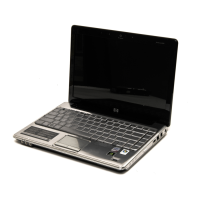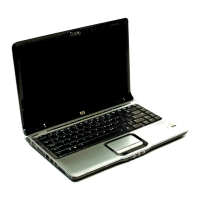Backup and recovery
Maintenance and Service Guide 8–3
Backing up your information
As you add new software and data files, you should back up your system on a regular basis to maintain a reasonably
current backup. Back up your system at the following times:
■ On a regular scheduled basis.
✎
Set reminders to back up your information periodically.
■ Before the computer is repaired or restored
■ Before you add or modify hardware or software
Note the following when backing up:
■ Create system restore points using the Windows
®
System Restore feature, and periodically copy them to disc.
■ Store personal files in the Documents library and backup this folder periodically.
■ Back up templates stored in their associated programs.
■ Save customized settings in a window, toolbar, or menu bar by taking a screen shot of your settings. The screen
shot can be a time-saver if you have to reset your preferences.
To copy the screen and paste it into a word-processing document, follow these steps:
1. Display the screen you want to save.
2. Copy the screen image:
To copy only the active window, press
alt+fn+prt sc.
To copy the entire screen, press
fn+prt sc.
3. Open a word-processing document, and then select Edit > Paste.
The screen image is added to the document.
4. Save the document.
■ You can back up your information to an external hard drive, a network drive, or discs.
■ When backing up to discs, use any of the following types of discs (purchased separately): CD-R, CD-RW,
DVD+R, DVD+R DL, DVD-R, DVD-R DL, or DVD+/-RW. The discs you use will depend on the type of
optical drive installed in your computer.
✎
DVDs support store more information than CDs, so using them for backup reduces the number of
recovery discs required.
■ When backing up to discs, number each disc before inserting it into the optical drive of the computer.

